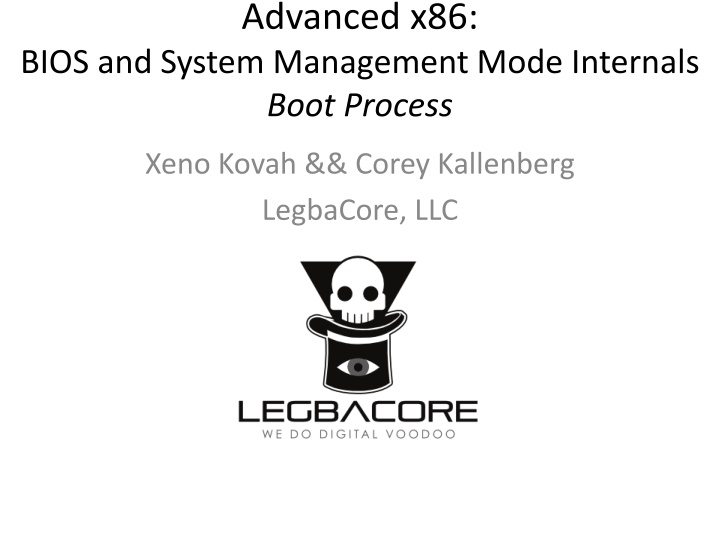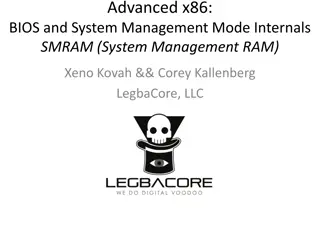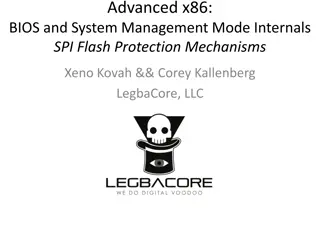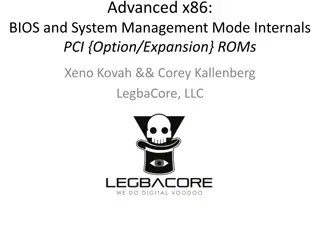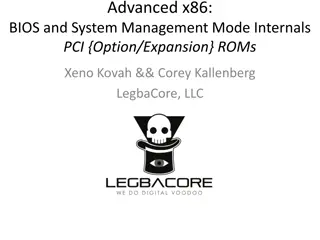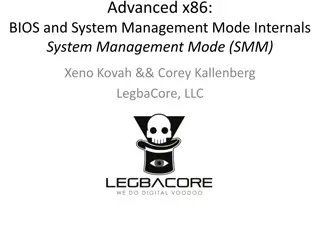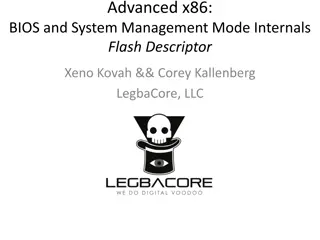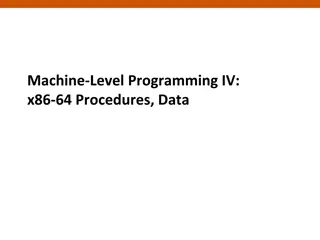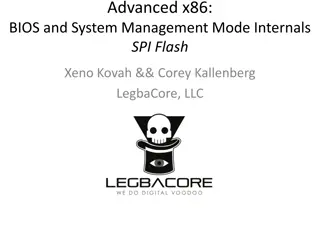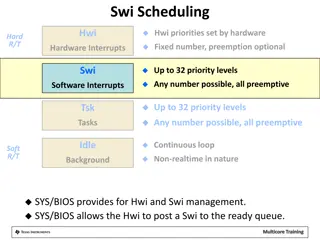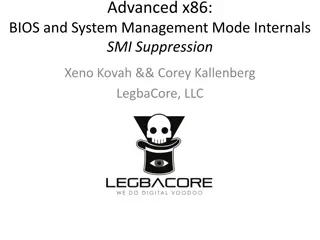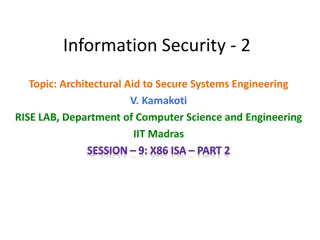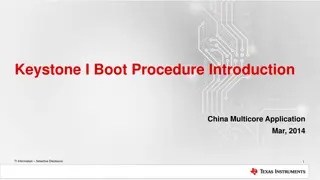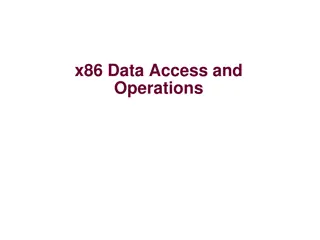Advanced x86: BIOS and System Management Internals Boot Process
This content delves into the intricate details of the BIOS and system management mode internals within the x86 architecture, focusing on the boot process before the operating system initiates. Covering topics like power-up sequence, memory initialization, CPU cache setup, chipset initialization, memory testing, and more, it offers insights into the critical steps undertaken by the system before the OS is loaded.
Download Presentation

Please find below an Image/Link to download the presentation.
The content on the website is provided AS IS for your information and personal use only. It may not be sold, licensed, or shared on other websites without obtaining consent from the author.If you encounter any issues during the download, it is possible that the publisher has removed the file from their server.
You are allowed to download the files provided on this website for personal or commercial use, subject to the condition that they are used lawfully. All files are the property of their respective owners.
The content on the website is provided AS IS for your information and personal use only. It may not be sold, licensed, or shared on other websites without obtaining consent from the author.
E N D
Presentation Transcript
Advanced x86: BIOS and System Management Mode Internals Boot Process Xeno Kovah && Corey Kallenberg LegbaCore, LLC
All materials are licensed under a Creative Commons Share Alike license. http://creativecommons.org/licenses/by-sa/3.0/ Attribution condition: You must indicate that derivative work "Is derived from John Butterworth & Xeno Kovah s Advanced Intel x86: BIOS and SMM class posted at http://opensecuritytraining.info/IntroBIOS.html 2
This covers an example of a minimal BIOS boot process, just to give an idea of what the BIOS does before your operating system starts to load. It doesn t include everything of course because it s geared towards minimal- configuration to achieve 100% functionality. 3
Boot Process at a glance* 1. Power-up 1. 16-bit Real Mode accessing address FFFF_FFF0h Operating mode selection 1. Flat protected mode Preparation for memory initialization 1. CPU microcode update 2. Set up CPU Cache as RAM (CAR) 3. Chipset initialization (MCHBAR, PCIEXBAR, etc.) Memory initialization 1. Configure the memory controller Post memory initialization 1. Memory test 2. Copy firmware from flash to memory for faster execution* 1. In the doc this is listed as firmware shadowing but I m modifying it somewhat since the BIOS can perform the copying of flash components to memory 2. As a general rule, it s better to copy things to memory before execution as soon as possible 3. Memory transaction redirection (PAM registers) 4. Setting up the stack (before memory initialization, stack will be in CPU cache) 5. Transfer to DRAM (the BIOS flash that was copied to memory is now executed) 2. 3. 4. 5. *This list composed from Intel Minimal Architecture Boot Loader 4
Boot Process at a glance* Miscellaneous platform enabling 1. Platform dependent: Initialize clocks to operate at N Hz, configure general- purpose I/O, etc. Interrupt enabling - PIC (Programmable Interrupt Controller), LAPIC (Local Advanced PIC), I/O APIC, etc. Interrupt tables 1. Interrupt Vector Table (IVT) 1. Interrupt Service Routine (ISR) INT 10h, etc 2. Interrupt Descriptor Table (IDT) 1. Exceptions Setting up timers 1. In ICH: RTC (, HPET, 8254 Programmable Interrupt Timer (PIT), TCO timer (used as watchdog) 2. In CPU: LAPIC timer 10. Memory caching control 11. Processor discovery and initialization 1. CPUID 2. Startup Inter-Processor Interrupts (SIPIs) are written to a processor s LAPIC telling it to wake up and where to start executing code at (must be a 4KB aligned boundary) 1. Intel SW Programmer s Guide has more detail on this 3. Each processor will awaken in Real Mode 6. 7. 8. 9. *This list composed from Intel Minimal Architecture Boot Loader 5
Boot Process at a glance* 12. I/O devices 1. Super I/O can control PS/2 keyboard, serial, parallel, etc. interfaces 13. PCI device discovery 1. Enumerate PCI devices 2. Assign address space (port IO, Memory Mapped IO) 3. Detect and execute Expansion ROMs (XROMs) 14. Memory map 1. Region types 1. Memory 2. Reserved 3. ACPI Reclaim 4. ACPI NVS 5. ROM 6. IOAPIC 7. LAPIC 2. Region locations 1. Consult your datasheet for a complete list, but we ll cover some of the more relevant ones 15. Non-Volatile (NV) storage 1. CMOS 2. NV SPI flash 16. Handoff to boot-loader *This list composed from Intel Minimal Architecture Boot Loader 6
Only 16 steps? BIOS is simple! Easy to summarize, not so easy to implement Very complex implementations Even if it s only a couple MB, it s a very DENSE couple of MB That list taken from the Intel Minimal Architecture Boot Loader which provides a pretty good list of functional requirements What is left out is: Initializing SMM and locking down SMRAM Locking down the BIOS Flash *This list composed from Intel Minimal Architecture Boot Loader 7
How do you learn about all that stuff? You could go review open source BIOSes code (CoreBoot or UEFI s TianoCore reference code) Or you can sign an NDA with Intel and read their very large BIOS Writer s Guide and associated documentation for each CPU/chipset At the end of the day, the open source code is more or less just doing what they re told to do by the Intel documentation 8
